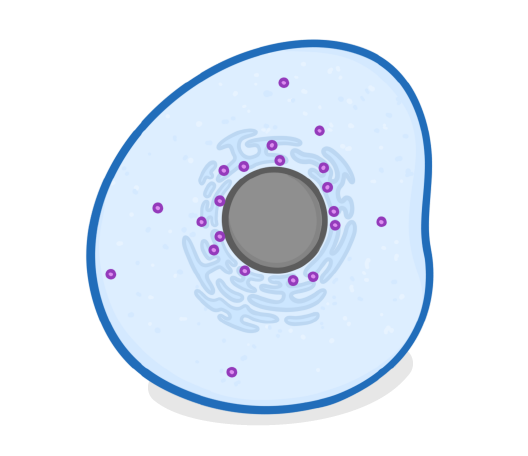DNA 2 - Key Terms
This lesson covers:
- What an 'allele' is
- What the terms 'dominant' & 'recessive' mean
- What the terms 'homozygous' & 'heterozygous' mean
- What the terms 'genotype' & 'phenotype' mean

Where are the chromosomes found in the cell?
Cytoplasm
Mitochondria
Nucleus
|
are the different versions of a particular gene.
|
Our body cells contain two copies of each chromosome, one from our mother, and one from our father. This means that we also have versions of each gene (each different version is a different allele).
|
Humans have two copies of each gene (alleles). If both alleles are the same, the person is said to be __________ for that gene.
Genomic
Homozygous
Identical
Heterozygous
|
Alleles can be either dominant or .
|
Charlie is heterozygous with one dominant allele and one recessive allele.
Which allele will be expressed?
The dominant allele
The recessive allele
|
In order to be expressed, how many recessive alleles must be present?
0
1
2
|
Genotype
- The term 'genotype' can be difficult to understand because it has multiple meanings.
- One definition describes a genotype as: 'an individual's collection of genes'.
- But the more common definition in this course is: 'the two alleles present for a particular gene'.
- In either case, the term genotype refers to the specific genes or allele that an individual has.
What is a phenotype?
The combination of alleles that an organism has for particular gene
The presence of two recessive alleles
The characteristics an organism has as a result of their genotype
|
If a mouse has one allele for brown fur, and another allele for black fur, would they be considered homozygous or heterozygous for that gene? Homozygous Heterozygous
|
If the brown fur allele was dominant, and the black fur allele was recessive, what colour would the mouse be? Blonde Brown Black
|
So in summary, the of the mouse is a brown fur allele and a black fur allele, whilst the is brown fur.
|
|